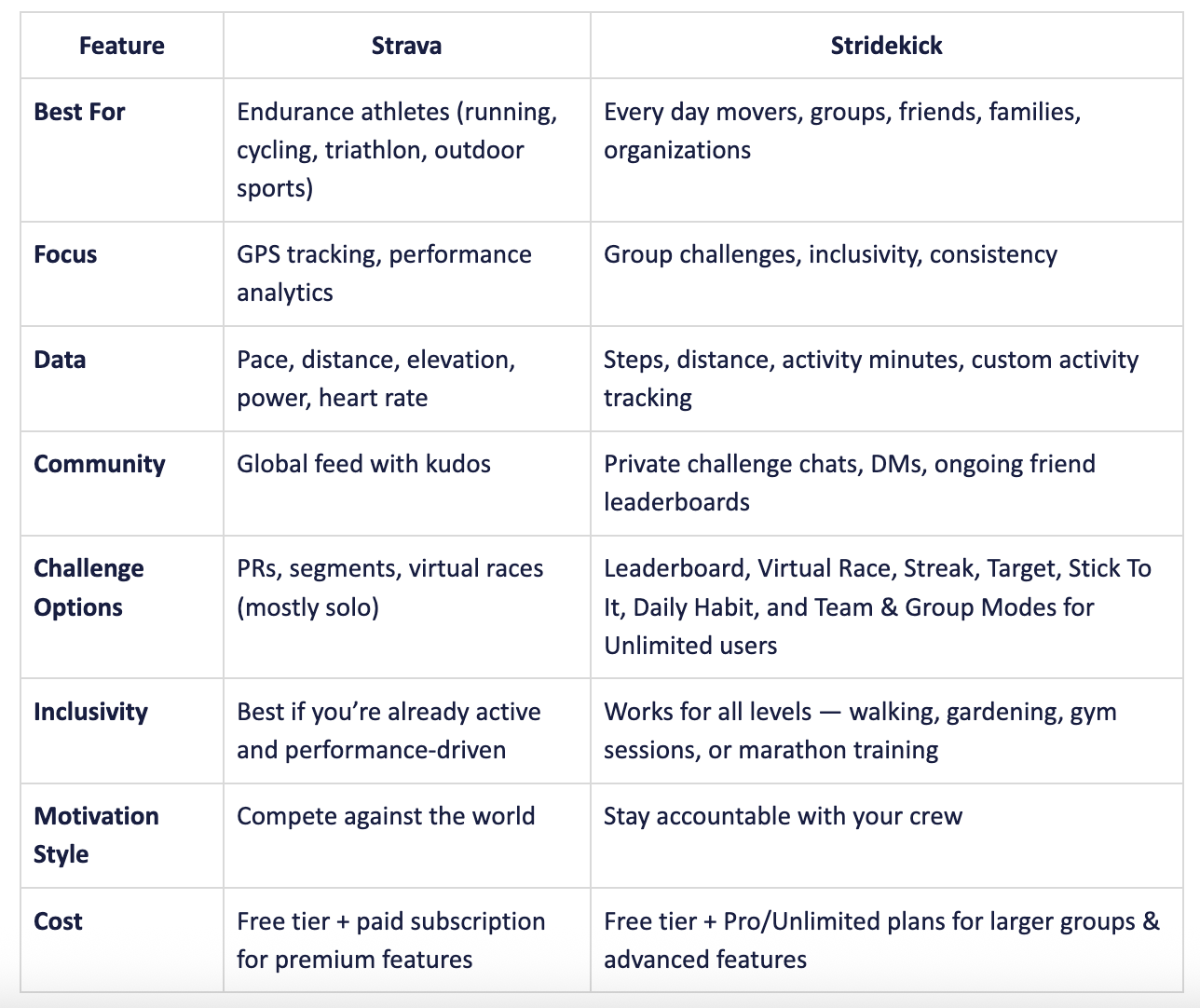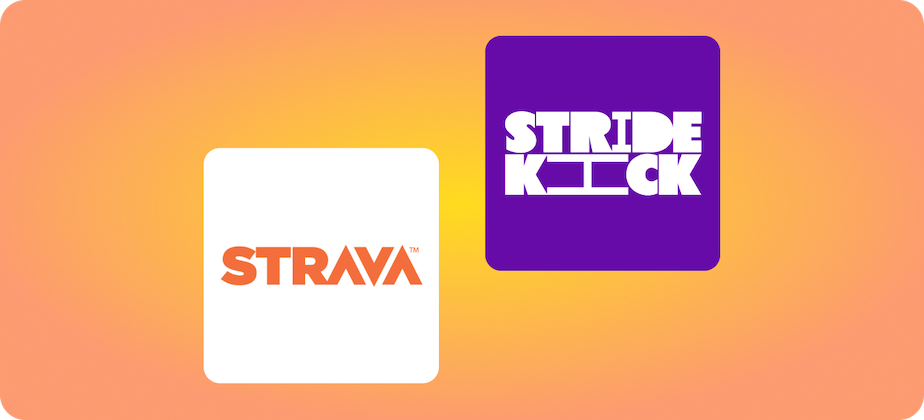Stridekick vs. Strava: Which Fitness App Is Right for You?
When it comes to fitness apps, two names often pop up: Strava and Stridekick. Both help people move more and stay accountable — but they’re built for very different kinds of goals.
Strava has become the go-to platform for endurance athletes. Think cyclists chasing KOMs (King of the Mountain), runners monitoring splits, and triathletes tracking training plans.
Stridekick, on the other hand, is built for everyday movers. It’s all about making fitness fun, inclusive, and social — whether you’re walking your dog, hitting the gym, or getting your friends together for a challenge.
So, how do you know which one is best for you? Let’s break it down.
What Is Strava? A Quick Look
Strava launched in 2009 and quickly became the social media platform for endurance sports. It’s used by over 100 million athletes worldwide and has one mission: help athletes track, analyze, and share their performance.
Core Strava features:
- GPS route tracking for running, cycling, hiking, swimming, skiing, and more
- Performance analytics like pace, elevation, heart rate, and power (for cyclists)
- Segments: time yourself (and compare to others) on popular routes
- Kudos and comments: the Strava equivalent of likes
- Subscription tools (paid tier): training plans, advanced analytics, recovery stats
Strava shines for people who live by their stats, love outdoor activities, and want to compete with a global network of athletes.
What Is Stridekick? A Quick Look
Stridekick was designed for a different mission: fitness for everyone. Whether you’re walking 3,000 steps a day or training for a half marathon, Stridekick gives you the tools to stay consistent — and have fun doing it.
Core Stridekick features:
- Challenge modes: Streaks, Stick-to-It, Team Leaderboards, Group Targets, Virtual Races, and more (see all challenge modes)
- Inclusive metrics: Steps, distance, activity minutes, custom goals
- Community features: Challenge chat, direct messages, add friends, filter leaderboards by day/week/month
- Device flexibility: Connect Fitbit, Apple Watch, Garmin, Samsung Health, Google Fit, and more
- Accessibility: Great for all fitness levels, not just serious athletes
Stridekick shines when you want to stay motivated with friends, family, or community and make movement more social.
Stridekick vs. Strava: Side-by-Side Comparison

Which One’s Best for You?
Here’s the truth: neither Strava nor Stridekick is “better” across the board. It all depends on what you want out of a fitness app.
Go with Strava if…
- You’re chasing PRs and want every split, stat, and route mapped.
- Competing against other athletes around the world lights you up.
- You geek out over pace charts, elevation gain, and recovery scores.
- You want a global community of endurance athletes cheering you on with kudos.
Strava is the ultimate training buddy for competitive athletes. If performance is your priority, it delivers.
Go with Stridekick if…
- You want fitness to feel fun, not intimidating.
- You’d rather stay accountable to your friends, family, or group than strangers online.
- You love variety: Leaderboards, Races, Streaks, Stick-To-It, Team challenges, Group Targets (explore all challenge modes here).
- You’re looking for inclusivity — Stridekick counts walking, running, gardening, dancing, and more, so everyone in your circle can participate.
- You value community: built-in chat, DMs, and ongoing friend leaderboards keep the vibe social, supportive, and fun (see how to boost group engagement).
Stridekick is where consistency and connection meet. It’s built for everyday movers, but powerful enough to keep entire groups motivated together.
The Bottom Line
Strava and Stridekick serve different purposes — and that’s a good thing. You don’t have to choose just one. Many people use Strava to track performance and Stridekick to keep their crew accountable. Together, they cover both sides of the fitness equation: performance and community.
👉 Ready to explore more?










